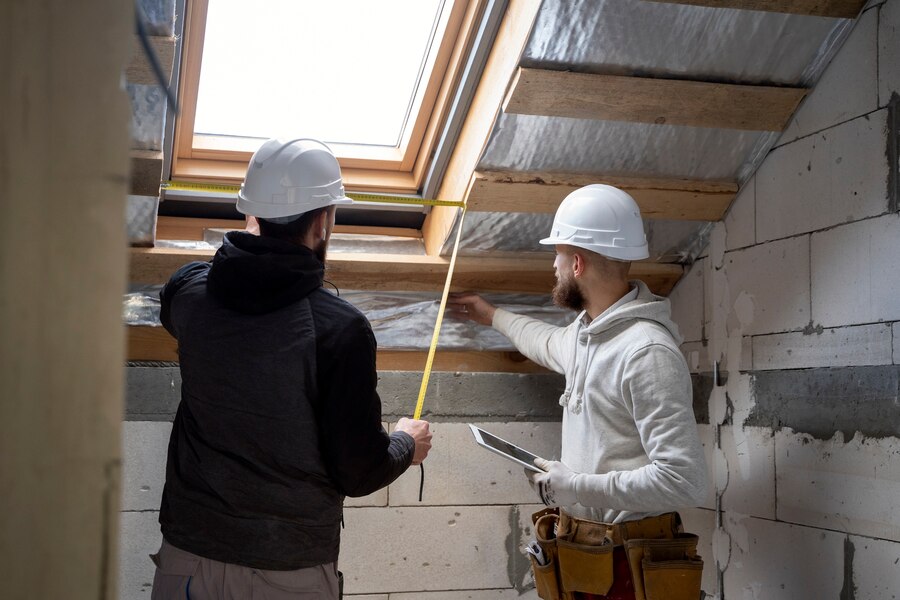Your roof plays a crucial role in protecting your home from the elements, keeping you safe from rain, snow, and extreme temperatures. However, like any other part of your home, it requires regular maintenance to remain in good condition. Ignoring potential roof issues can lead to expensive repairs or even structural damage. If you notice any warning signs, it’s essential to act quickly to prevent further deterioration. A Roof Inspection can help identify hidden problems and ensure your roof remains in top shape, potentially saving you thousands of dollars in repairs.
A professional Roof Inspection can uncover issues that aren’t always visible to the untrained eye. Whether it's missing shingles, water damage, or structural concerns, catching problems early can help extend the lifespan of your roof. Below are ten clear signs that indicate your roof may need an inspection as soon as possible.
1. Missing or Damaged Shingles
Shingles serve as the first line of defense against harsh weather conditions. If you notice that some shingles are cracked, curled, or missing altogether, it's a sign that your roof is vulnerable to leaks and water damage. Harsh weather, age, and poor installation can all contribute to shingle deterioration. If you see patches of missing shingles, call a roofing professional for an inspection before the problem worsens.
2. Water Stains on Ceilings or Walls
Water stains on your ceiling or walls indicate that moisture is seeping through your roof. This can be caused by damaged shingles, deteriorated flashing, or clogged gutters. Even small water stains should not be ignored, as they can lead to mold growth, structural damage, and costly repairs. A Roof Inspection can help identify the source of the leak and prevent further damage to your home.
3. Granules in Your Gutters
Asphalt shingles are coated with protective granules that help shield them from the sun’s UV rays. Over time, these granules can wear off due to age or harsh weather conditions. If you notice an excessive amount of granules accumulating in your gutters, it’s a sign that your shingles are wearing out and may need replacement. Without these granules, your roof becomes more vulnerable to water damage and deterioration.
4. Sagging Roof Deck
A sagging roof is a serious problem that should be addressed immediately. It typically indicates structural issues caused by prolonged water damage or excessive weight on the roof. If your roof appears to be sagging in certain areas, it may mean that the supporting structures underneath are weakened. A professional Roof Inspection can assess the extent of the damage and determine the best course of action to restore your roof’s stability.
5. Mold, Moss, or Algae Growth
The presence of mold, moss, or algae on your roof is a sign of trapped moisture, which can weaken roofing materials over time. Moss can grow between shingles and lift them, allowing water to seep underneath. Algae, on the other hand, can make your roof appear dirty and reduce its lifespan. If you notice excessive growth, a Roof Inspection can help you determine whether your roof needs cleaning, repairs, or improved ventilation.
6. Sunlight Coming Through the Attic
If you can see sunlight streaming through the attic, it means there are gaps or holes in your roof. Even small holes can allow rain, pests, and cold air to enter your home, leading to bigger problems down the line. Regular inspections can catch these issues early and prevent costly repairs. If you notice any light coming through, schedule a Roof Inspection immediately.
7. High Energy Bills
An increase in your heating or cooling bills may be linked to poor roof insulation or ventilation. A damaged roof can allow heat to escape in the winter and let hot air in during the summer, forcing your HVAC system to work harder. A professional inspection can help identify areas where insulation may need improvement, ultimately reducing your energy costs.
8. Flashing Damage
Flashing is the metal material placed around chimneys, vents, and skylights to prevent water from seeping into your home. If the flashing is cracked, rusted, or missing, water can enter through these vulnerable points and cause leaks. Damaged flashing should be repaired as soon as possible to prevent major water damage inside your home.
9. Roof Age
Most roofs have a lifespan of 20 to 30 years, depending on the materials used. If your roof is nearing the end of its expected lifespan, regular inspections are crucial to ensure it remains in good condition. Even if there are no visible signs of damage, an aging roof may have underlying issues that could lead to expensive repairs if left unchecked.
10. Recent Severe Weather Events
Extreme weather conditions, such as heavy storms, hail, or strong winds, can cause significant damage to your roof. Even if the damage isn't immediately visible, hidden issues like loose shingles or small leaks may develop over time. After a major storm, it's always a good idea to schedule a Roof Inspection to check for potential damage before it escalates.
Final Thoughts
Your roof is one of the most critical components of your home, and keeping it in good condition requires regular maintenance and timely inspections. If you notice any of the signs mentioned above, don’t wait until the problem worsens. A professional Roof Inspection can help you identify and address issues before they turn into costly repairs. By staying proactive, you can extend the lifespan of your roof and protect your home from serious damage.
If you haven’t had a Roof Inspection in a while, now is the perfect time to schedule one. Whether you’re dealing with missing shingles, water leaks, or aging materials, early detection is the key to avoiding major expenses. Don’t take chances with your home’s safety—contact a roofing professional today!





Comments